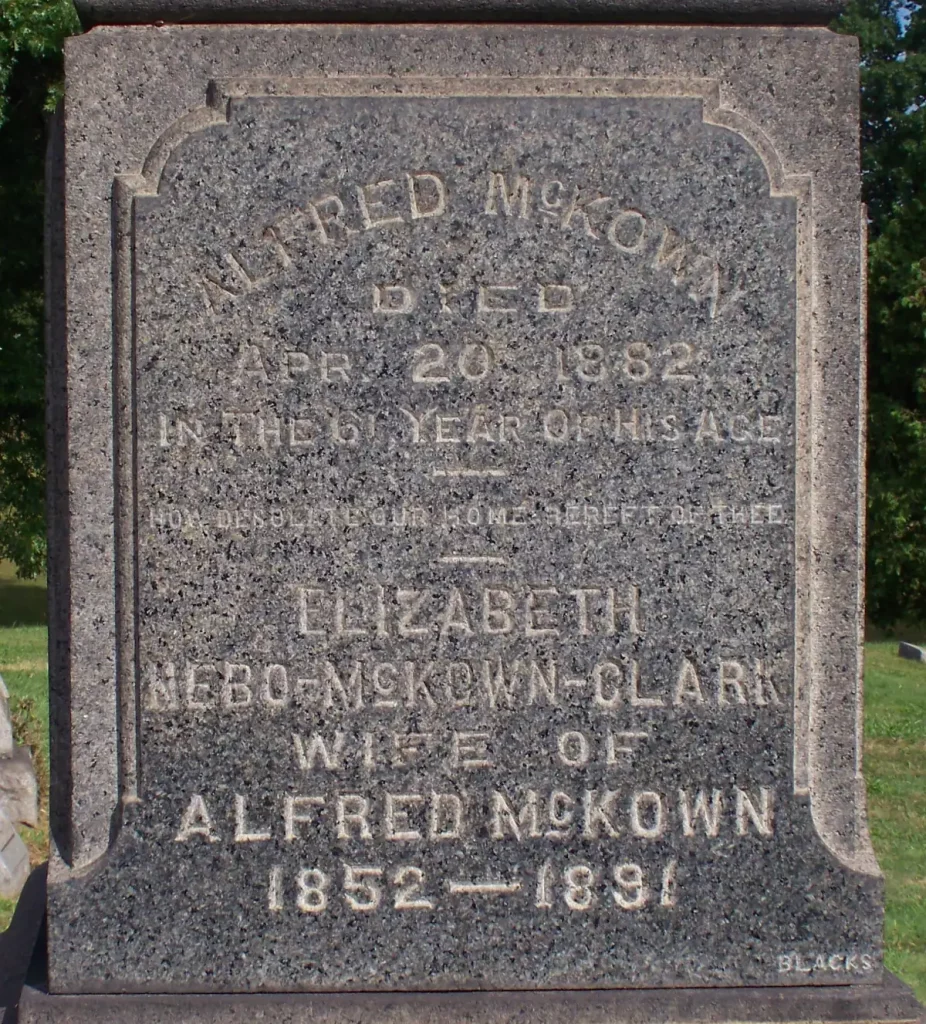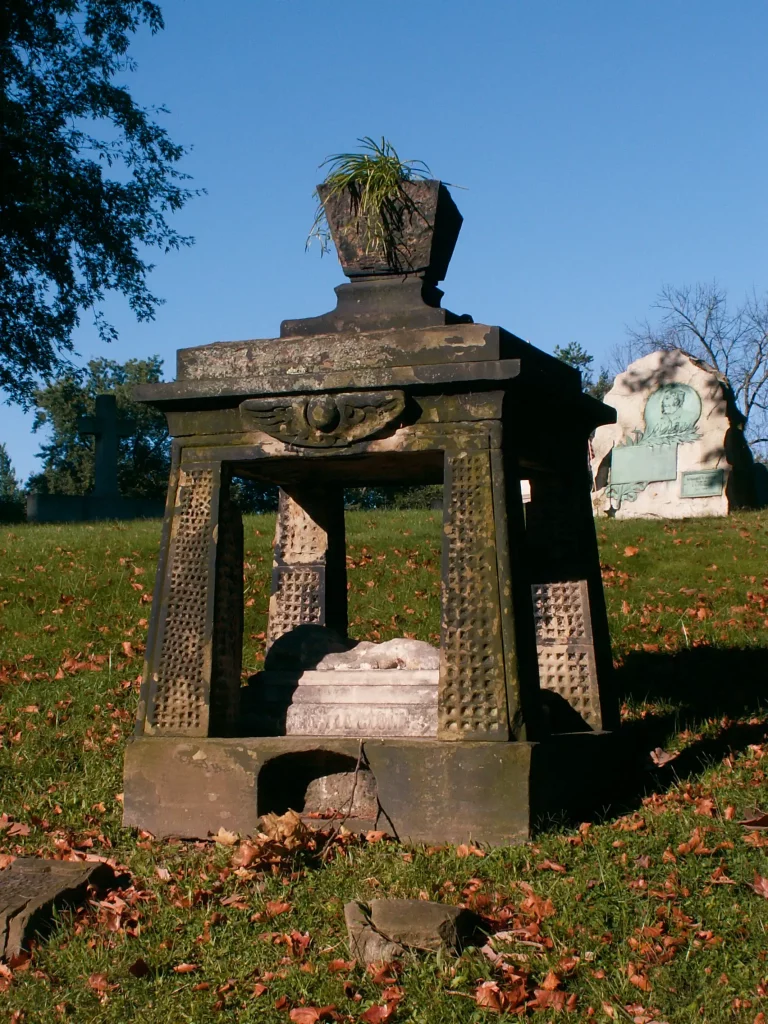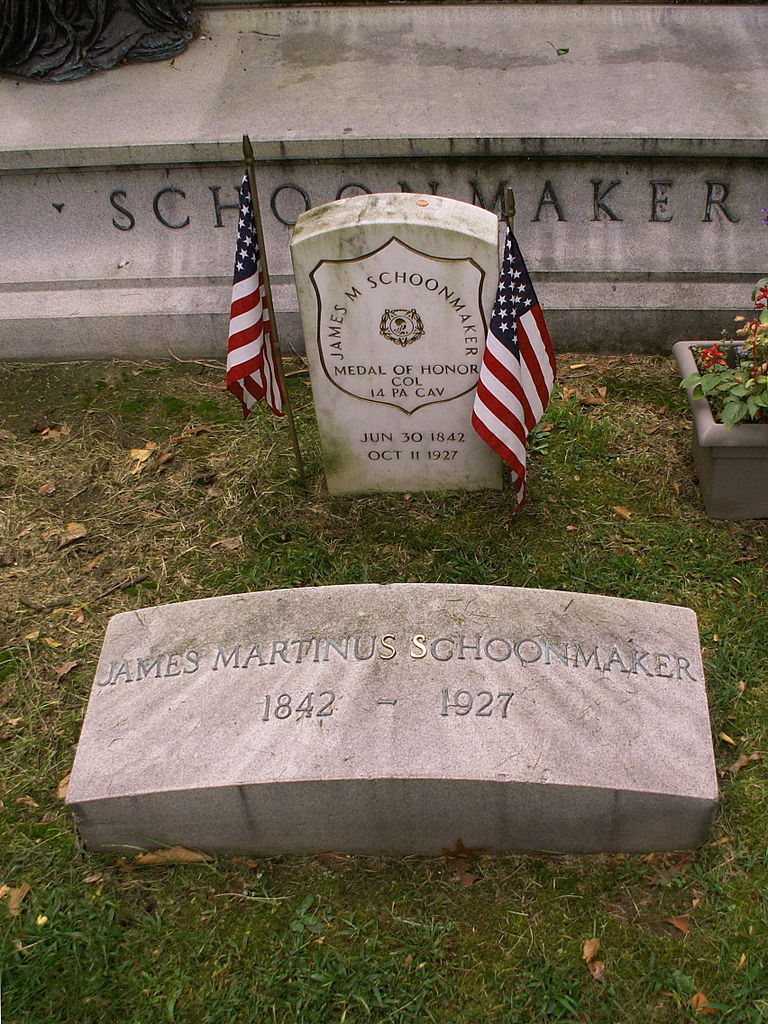
This is a fairly standard obelisk with some extra ornamentation to make sure it is not too plain for Victorian taste. There must be an interesting family story in the inscription. Alfred McKown married a woman more than thirty years younger than he was. When he died, it seems that the 29- or 30-year-old widow married a man named Clark. She did not live to see forty, and she is memorialized here. If she is buried here, one wonders what became of Mr. Clark.

The name “Blacks” appears below the inscription; is it the name of the stonecutter or monument dealer?









